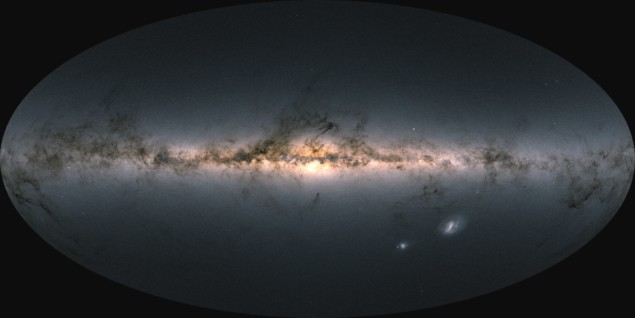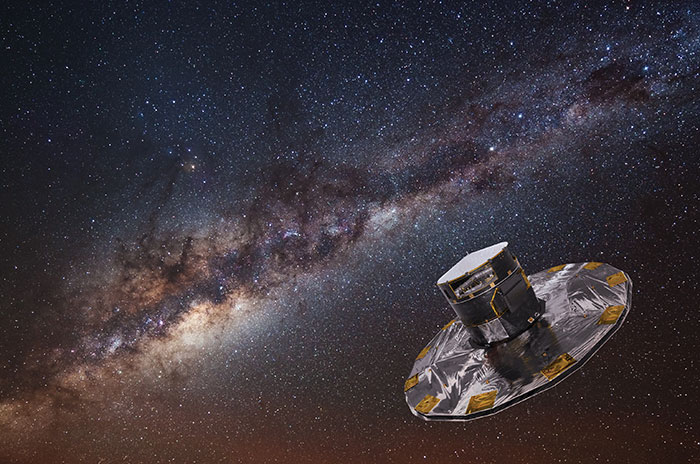
The European Space Agency (ESA) has released the latest star map of the Milky Way taken by its €450m Gaia mission. Gaia’s third data set, released today, contains high-precision measurements of nearly 2 billion stars, allowing astronomers to trace the various populations of older and younger stars out towards the very edge of our galaxy – the so-called “galactic anticenter”. The new data will also let scientists study how the solar system formed as well as its acceleration compared to the universe.
Gaia was launched in December 2013 and started observations the following year from its position around 1.5 million kilometres from Earth in the opposite direction from the Sun. Gaia has two telescopes and the spacecraft rotates once every six hours so that they scan the sky, focusing light onto a huge CCD sensor with nearly a billion pixels – one of the largest ever flown in space. Gaia’s mission is to plot the precise positions, motions, temperatures, luminosities and compositions of over a billion stars across the Milky Way. A billion pixels, a billion stars
The first data release, based on just over one year of observations, was published in 2016 and contained the distances and motions of two million stars that was followed by a second release in 2018 that covered the period between July 2014 and May 2016. This included high-precision measurements of nearly 1.7 billion stars as well as measurements of asteroids within our solar system.
The third data set comes in two parts, with today’s announcement being an early release of the full set, which is planned for 2022. “The new Gaia data promise to be a treasure trove for astronomers,” says Jos de Bruijne, ESA’s Gaia deputy project scientist.



